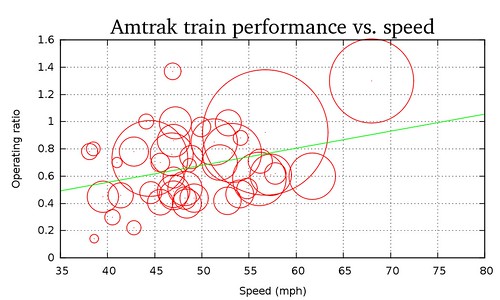Fitz and the Tantrums - MoneyGrabber
What the funk, GOP?
I could say that for just about anything these days, but I'll stick to transportation. The Minnesota House passed a bill with a provision to cut $130 million in funding for the Metropolitan Council. How did we go from either $69 million or $120 million last week to $130 million this week? I don't understand the intricacies of it, and it's not worth it to me to dig into it further at the moment because the state senate's bill is less egregious, from what I hear, and it's hard to say what Governor Dayton will decide to do.
Crises do bring an opportunity to examine issues in greater detail. I'm pretty sure that Metro Transit will be forced to make some cuts of some sort. I hope they can avoid trimming urban routes and weekend service (which is already pretty minimal).
The first thing Metro Transit should cut is the number of bus stops to optimize spacing. It seems that the average distance between stops is about 600 feet in Minneapolis—only one block for north-south routes, and two blocks for east-west routes (generally the opposite is true in Saint Paul). That's basically too close together for buses to even get up to the speed limit before stopping. Metro Transit should cut between 1/3 and 1/2 of its stops, increasing the average spacing to every 2 long blocks or every 4 short blocks.
This will frustrate a lot of people, and even I get a bit concerned about the idea, but this would speed things up and make schedules more consistent, hopefully reducing the need for timed stops, thereby increasing speed further. The exercise would also probably free up some transit shelters and benches, which could be relocated to the many fairly busy stops that are currently just slabs of concrete and which would attract more riders if there was better cover.
Secondly, the Go-To Card and other transit passes need to be promoted even more heavily, and it needs to be easier to buy and fill up those passes. I see people using the Go-To Card and the U-Pass a lot on my regular route, the 3, but that's partly due to a heavy student population. When I travel out of the tech-savvy student zone, the cards become a lot less common.
The cards are a great way to get around because they get rid of the need to keep getting dollars and coins (which are harder to get these days now that people use credit cards more often). They also speed up boarding and reduce the need for passengers to fumble for change.
Consider reducing the amount of time that transfers are valid down from the current 2.5 hours. That must cover almost all one-way trips on the system, plus many two-way trips. Dropping it to 1.5 hours could continue to cover most one-way trips yet stealthily increase the revenue generated by two-way errand traffic. However, I worry it would hurt the most transit-dependent riders the worst.
Area transit agencies should engage local neighborhoods and businesses to offload the costs of constructing and maintaining bus shelters—and hopefully work on maintaining local sidewalks as well as constructing them where they currently don't exist. Neighborhoods throughout the core cities and inner suburbs need to get competitive about promoting themselves through their local infrastructure in order to combat flight to the exurbs.
- Transit agencies should also work with the cities and counties they serve to see if roads can be cheaply reconfigured to run buses faster—hopefully also finding room for bicyclists in the process.
Increasing speed wouldn't help my situation all that much, though it would help a lot in the aggregate. Mn/DOT likes to use time savings when talking about highway projects and expensive transit investments—like the Hiawatha Line, the Northstar Line, and the Marq2 project in downtown Minneapolis—yet the vast majority of urban bus riders have hardly seen any attempts at speed improvements. I have to think that some significant speedups could occur, on the order of a minute per mile. Considering that there are somewhere around 280 million passenger-miles run on Metro Transit's urban routes each year, there would be an immense bang for the buck from speeding up service. Increasing average speed by one mile per hour would probably save more than 1.9 million hours per year for passengers and more than 160,000 hours for bus drivers—which could directly translate into a $3.2 million savings for the company. Saving a full minute per mile goes up to 4.7 million hours for passengers, 380,000 hours for drivers, and a $7.6 million savings for the company.
Well, life is always more complicated than the math figures I can come up with, but I think there's an extremely strong case for my first point about removing excess bus stops. It should save money while improving quality of service, which should translate into more riders and more revenue.
